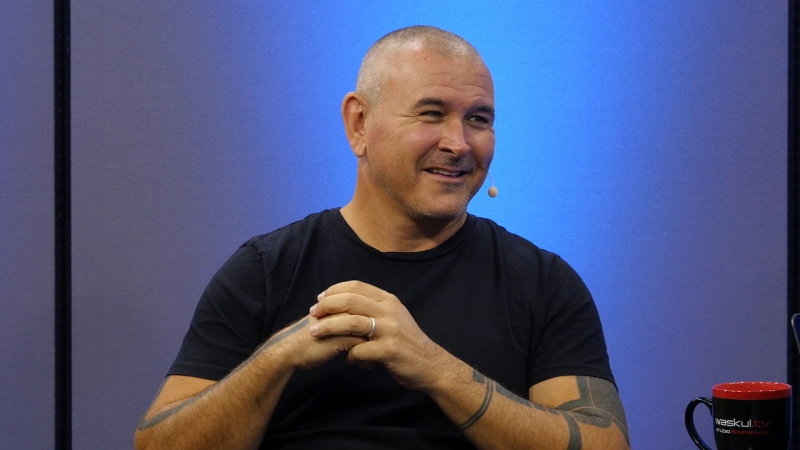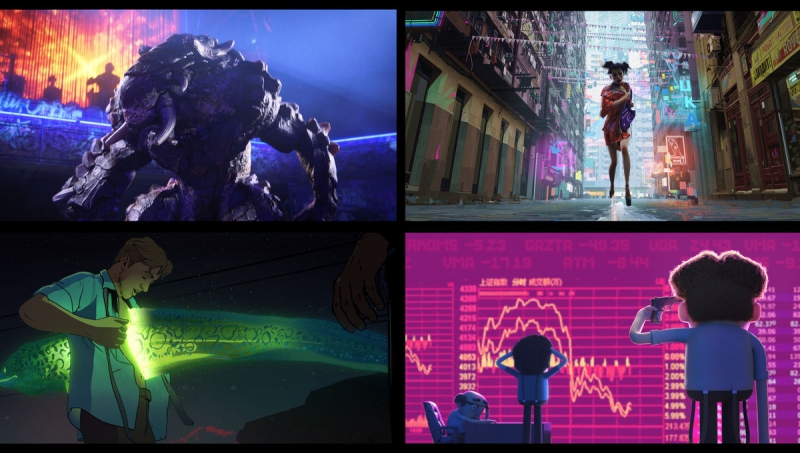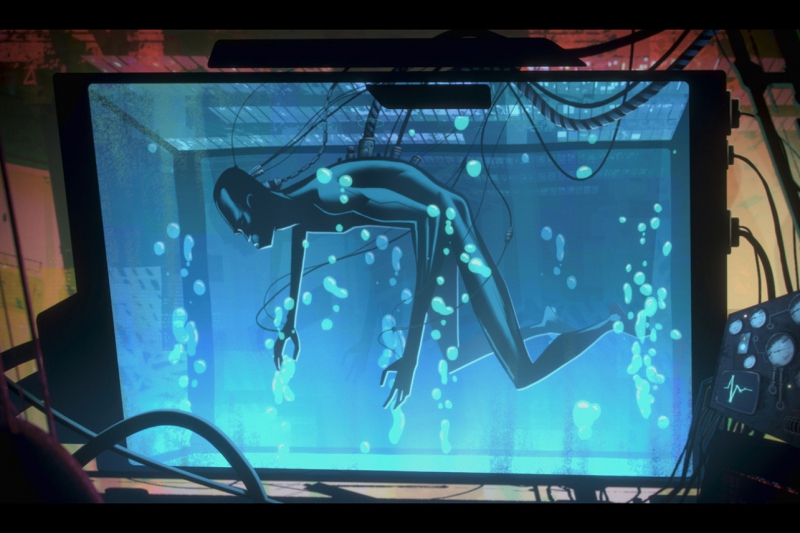First news about the project started coming in as early as 2008. Back then, Tim Miller, the filmmaker visionary behind Deadpool, and David Fincher, who worked on Fight Club and the more recent The Girl with the Dragon Tattoo, House of Cards and Gone Girl, expressed their interest in creating an anthology of short Sci-Fi stories. 11 years down the road, their plan has finally translated into reality. Earning comparisons with the likes of Black Mirror and The Animatrix, Love, Death & Robots is now carried by the streaming giant Netflix.
“We’ve been wanting to do an animation anthology for ten years at least, and trying to do that all this time. For one, we’ve tried to do another Heavy Metal film (a 1981 adult animated sci-fi-fantasy directed by Gerald Potterton – Ed. note) for a long time. I’ve always loved anthology, which is why we’re kind of doing this story in the first place, because I’ve read so many short stories over the years, I had a ready library.
“So when I met David, I don’t know, 15 years ago or so, I showed him a bunch of projects I was interested in, and one of these was an animation anthology. And he was like, yeah we should do that, because we can experiment, we can try working with different artists, different styles. He just loves animation, and he loves the creative endeavor. He came to the studio once and he saw that we had this big warehouse full of people and they’re all relatively enjoying their job and trying to do creative stuff, and he just liked that vibe,” recalls Tim Miller.

Each episode was authored by a different animation studio who fashioned it as per their own vision and approach to content creating. In total, Love, Death & Robots was a product of teams hailing from 11 countries all over the globe. Among them are Unit Image, a high-end, France-based animation studio specializing in full CG and VFX game trailers, commercials and feature films (Call of Duty: Infinite Warfare, God of War); Passion Animation Studios, a global animation production company who among others created music videos for Gorillaz; Sony Pictures Imageworks, the animation colossus churning out visuals for the Marvel movie franchise; Tim Miller’s own award-winning production studio Blur; and Digic Pictures, a Hungarian animation studio with world-renowned expertise in the production of 3D animated game cinematics CGI (Witcher 3: Wild Hunt, Destiny 2). One of the shorts was created by Russian animators Vitaliy Shushko and Elena Volk.
There were no rigid plotlines or stylistic rules confining the artists. Though the title may create the impression that the topics of technologies and futurism reign supreme, the anthology’s real subject matter goes way beyond that, giving voice and screen time to cyborg bounty hunters, alien spiders, sentient dairy products, werewolf soldiers, robots gone wild, and blood-thirsty demons from hell. Most of that comes with an 18+ age requirement, too, so you’ve been warned.
Stylistics and literary inspirations
As noted by the creators of the series, they made a conscious decision to veer away from the filmmaking package of feature cinema, instead placing the emphasis on the diversity of ideas and unique visual imagery that comes in a variety of styles from traditional 2D to photo-real CGI. This was a deal-breaker for many a creator involved: Tim Miller says that they didn’t have to talk anybody into joining the creative process; every artist approached was excited both by the concept itself and the freedom of creative expression it implied.

“Modern animation studios have lots of opportunities, they can work with big clients and everything, but it’s very rare that there are clients like us, who come in and say, “Here’s three different stories that we think your studio would be good for, which one do you like, which one would you enjoy doing most?” You don’t get that kind of chance usually. So everybody not only saw this as an opportunity to put their studio forward, but they were also genuinely excited about just being let off the leash,” shares the producer of Love, Death and Robots.
He adds that the allocation of the budget was dictated by the degree of the animation finesse a particular episode operated in and the running length it had. That said, timelines definitely weren’t something the authors of the series were too preoccupied with. The teams didn’t have a set time limit, with almost all of them ending up working more time than they were paid to do, just because they wanted to give their creations their utmost. In the end, the whole process took two and a half years to be implemented.

The majority of the episodes are based on a particular Sci-FI short story; only two of them operate on an original screenplay. A chunky total of three episodes were inspired by the works of the American science-fiction great John Scalzi. In Three Robots, the automaton protagonist trio set about on a tour to a post-apocalyptic city long devoid of people, while the colorful story of When The Yogurt Took Over follows a higher-order, sentient dairy product as it moves closer and closer to world dominance. His last contribution, Alternate Histories, is a six-fold vengeance on Hitler.
Two other episodes draw on the stories by another Sci-Fi megabrain Joe Lansdale. One of these, Fish Night, sees two salesmen get stuck in the desert only to be thrown into a wild adventure to the beginning of times.
Target audience and viewing order
Tim Miller self-styles the series as a “love letter to nerds”, with some critics reproaching it for appealing to “a particularly retrograde subset of genre fans”. This was a call to arms to stalwarts on the other side of the spectrum, giving rise to heaps of internet debates, with one of the most innocuous ones tackling the right order in which the episodes should be viewed. For one, the outlet Wired has already weighed in with its suggestions.

“Netflix is really trying some different things on the service where you can dip in where you choose, you can look at all of the stories and choose where to go in and it will take you back up and the episodes will start playing in the order that we think works best. But really, the “we think works best” is really just my guess at what I would want to see, and that’s based on no solid theory other than [that] some of them are really heavy, so you wanna give people a little palate cleanser after that, and [also that] there are different lengths so I wanted to play with that. And I wanted to mix up the styles. There is a ton of ways to mix it,” says Tim Miller.
The filmmaker has already hinted at a possible series two of the project. He admitted that he was so caught up in the episode “Sucker of Souls”, which tells the story of a vampire who cuts loose after being freed by an archeological expedition, that he offered the author Kirsten Cross to write another story with the same characters.





